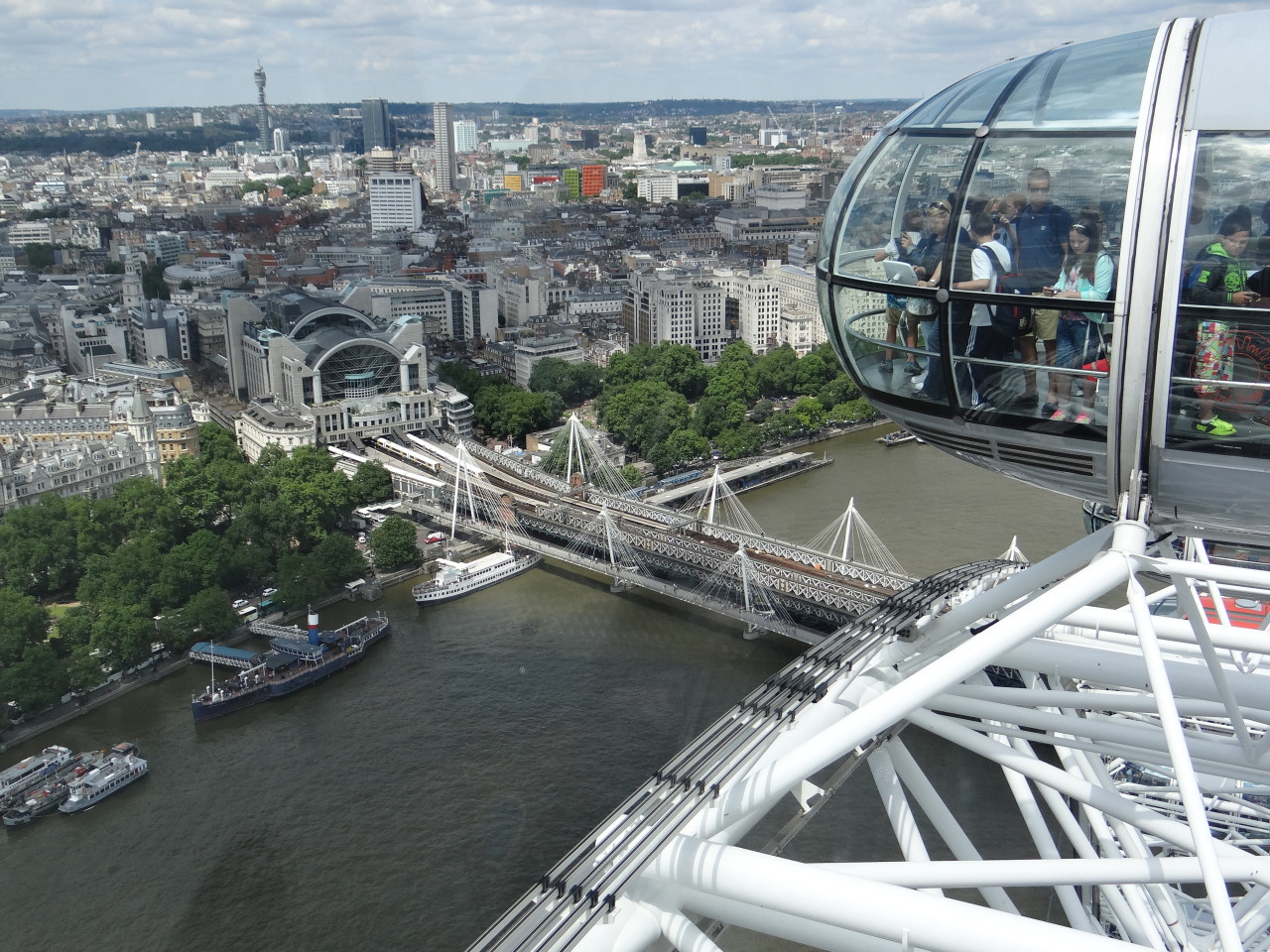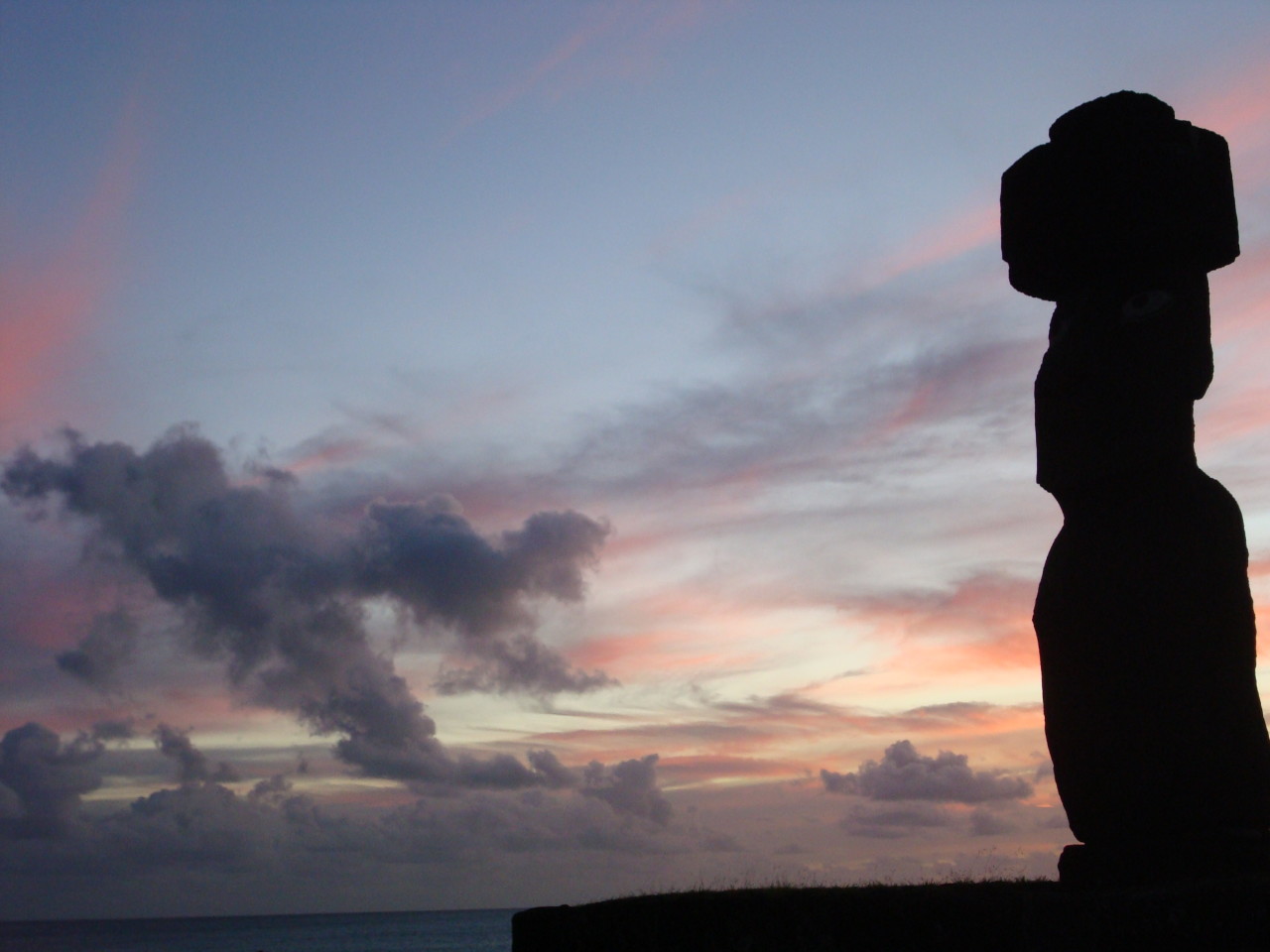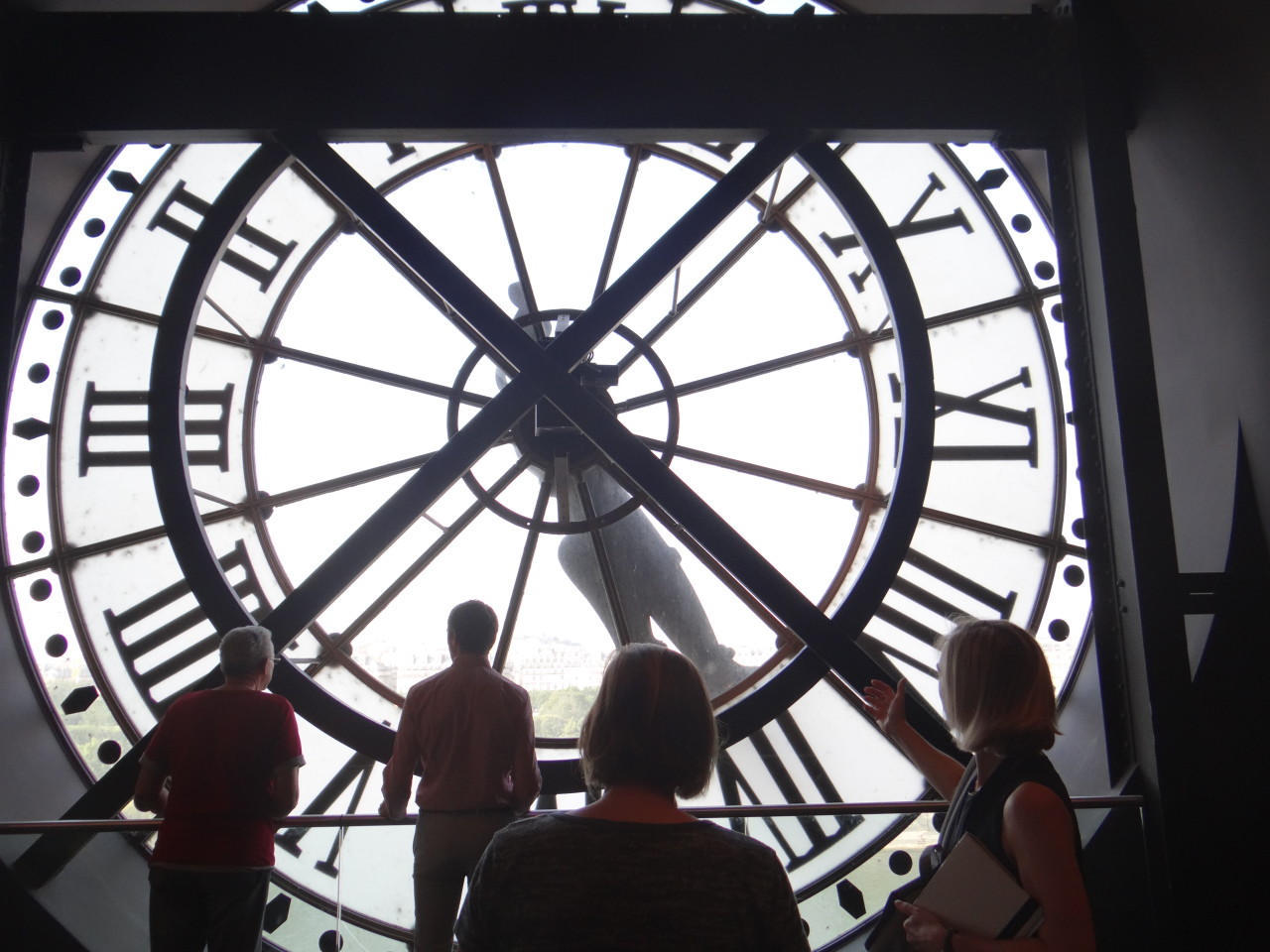
As we cruised the Seine last year, my niece pointed to the clock at the Musee D’Orsay and I explained it was once a train station and now is an art museum. After our Louvre treasure hunt, my niece, eleven at the time, had enough of art (and crowds) so we would only see the museum from the outside on this trip. When Context tours invited me to be a guest on their Musee D’Orsay and Paris in the 19th Century tour during my travel sabbatical, I happily said yes. My first visit, in 1993, for the Barnes Collection exhibition left little time to explore, so I was excited to actually learn about the museum, its collections and the history of Impressionism.
Waiting on the corner across from the café and the D’Orsay, our small group materialized. The guide, Isabelle, explained that we had four women on the tour today. With three of us on time, we waited as we chatted. Both were fans of Context having done many tours with them in Paris and elsewhere, I was new to Context. Isabelle checked her messages before proceeding with our tour of the Musee D’Orsay when it seemed the other guest was a no-show. When was the last time you had a tour with just three people? I already loved the small size and the fact that I didn’t have to wear a headset to listen to the guide.

The View from the Bridge
We walked toward the museum and then passed it, crossing the street to walk along the Seine to the nearby bridge. Here as we saw a happy young couple going through their own love lock ceremony (now that the Pont de Arts locks are being removed) as we sat on the bench listening to the history of the building. Isabelle showed us historic photos of Paris and the railway station on her iPad. The railway station is one of a few buildings still standing from the 1900 Exposition (World’s Fair) and it happily survived a demolition request in 1970 to be added to the Historic register. We are lucky it didn’t become that hotel in the 70’s or a Madison Square Garden (the original NYC Pennsylvania Station was demolished and if you read the story, what a shame that was).


From the outside, I’ve always admired the building from the street and from the water. It’s impressive, it’s detailed, it’s gorgeous architecture. The design, by architect Victor Laloux, using steel at the time was surprising as were the stone flowers and high ceilings (all during the Industrial Revolution). And that’s just the outside, let’s go inside for even more impressive views of both the former railway station and the revolution that occurred by a group of painters who would be known as the Impressionists and Post-Impressionists.


Inside Musee D’Orsay
After the security checks we entered the museum on the ground level and immediately looked up. If the structure outside was impressive, inside is just WOW! Turning a railway station into an art museum is pretty inspired way to reuse space and showcase the history of the city, it’s art and architecture.
Unlike a tour that focuses on the most popular pieces of art in the collection, Isabelle started with the history of the art movement (Barbizon School of Realism) that led to the Impressionists and Impressionism through to the Post-Impressionists. We were definitely being schooled in art on this tour to give each art work a second (or third) look. Like me, I’m sure you do a quick “like it, hate it or not sure yet” but on this tour you got more information to the piece. When you dig deeper into an artist, a technique, the rules, a movement or the politics at the time, the art starts to take on more layers not only in paint but in understanding.

We moved from room to room focusing on a few works (you will have time after the tour to revisit your favorites as it was late night Thursday) as Isabelle gave us more to think about as the visit was evolving as the movement was, piece by piece, room by room. Remember that artist in the first room who did x? This is how the artists evolved to do y and z in these rooms.

Models, Restoration and Movement in the 19th Century
On the ground floor, I literally walked over the most interesting model, it was the Hausmann design of Paris in the 1800’s. Located under the plexiglass floor, the model city, grown out of one vision that destroyed much of Paris to build the new Paris that we know. Another model, this one reminiscent of a doll’s house was the Paris Opera, the Beaux Arts building built in 1875. To see the various layers and chambers of the Opera (which I’ve yet to visit) was a delight, I can only imagine it is stunning in person.

Moving from the Opera, we learned the back story of the classic Montmartre colorful posters, by Henri de Toulouse-Lautrec, which let us peek into the theatrical life in Paris at the time.

The View From Above
Walking past the famous polar bear, Pompon, which I said looked like the “Coca Cola Polar Bear” (no one found me funny). The bear is the one exception in the museum which has works from 1848-1914. Pompon was the assistant to Rodin and Claudel and his bear was created after 1922.

Riding the escalator up, we found the oft overlooked (a bit hidden) stairs leading to the observation area. With a birds’ eye view of the museum, you further appreciate it all and marvel at the achievement. For a brief moment, a movie flashes in my head of the stream trains, platforms, the porters, the luggage, the clothes of the early century and the movement of the people down below arriving/departing Paris from this station from 1900-1939.

The Clocks at Musee D’Orsay
Just a cool view of Paris from behind the clock face. You can see Sacre Coeur in the distance as you watch the hands move with each minute passing. If you watched the lovely kids movie, Hugo, you will immediately feel like you know this clock (if you haven’t watched it, go Netflix it now!).


The Musee D’Orsay Ballroom
The original railway station had a hotel attached and you can view the ballroom and step back in time. Who wouldn’t want to have a party here? Imagine yourself dancing in your own Monet painting come alive.

The Art You Know
So for all of us non-Art majors, once you see Degas’ Ballerina or Monet’s famous Garden at Giverney, things start to click as the tour and Isabelle’s commentary has connected all of the dots to get you here. When I started the tour, I looked weirdly at the first painting thinking “that’s not impressionism” but it was the foundation for which all of the other layers are built upon. It culminates with the more famous of the artists (think Renoir, Monet, Manet, Van Gogh, Millet and Gauguin).


Not to say that each piece isn’t worth a mention but the guided tour really built the puzzle best. We skipped that artist or painting for a reason, we looked at these pieces because we needed to, we ended here because we should. Now it was time to explore on my own. The story (history) of the Impressionism movement and artists is quite an interesting lesson. One that you will definitely get with a Context tour of the Musee D’Orsay.


I was a guest of Context on this tour, which cost €85 and is limited to six guests. The tour started at 3:30 p.m. on Thursday (late night at the Musee D’Orsay) and lasts three hours (wear good shoes). As always, the opinion is mine, just ask me about art now as I’m dangerous with a little bit of knowledge!






6 thoughts on “Paris: Musee D’Orsay – Layers of Art, History and Architecture”
Sounds like a tour I would love to take. I love seeing things through new eyes with a knowledgeable guide who is passionate about the subject matter.
Steph – am sure you’d love it! I wasn’t aware of Context but the more I read about their tours, the more I realize how much there is to learn around the world.
Another great article. I remember Karen and I eating lunch there overlooking the museum. Even to this day we have the Degas’ dancer print we got at the D’Orsay in our foyer. If we ever get back to Paris we have to check this tour out! Thanks for your write-up!
Who’s the painter of the first work, the crystal ball gazer?
“A Solo Traveler is Born,” by the way, is one of the best travel posts I’ve ever read.
Tom – Thanks for the kinds words – I love the “abandoned in paris, a solo traveler is born” post too – it really set the stage for how I dealt with the rest of my life. As for the painting, it is called “La Vierge adorant l’hostie” by Jean Auguste Dominique Ingres. The Musee D’Orsay has a fantastic interactive website so you can view more about the work and the artist as it was located on floor 0, Salon 1
Comments are closed.